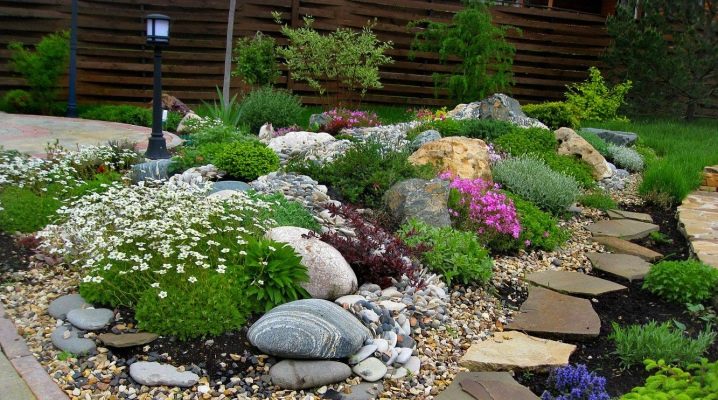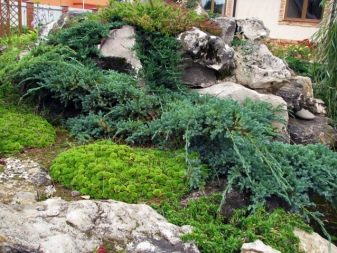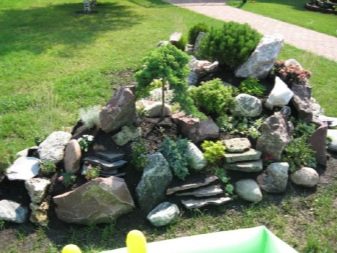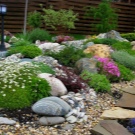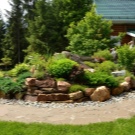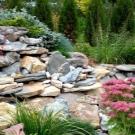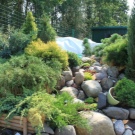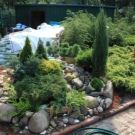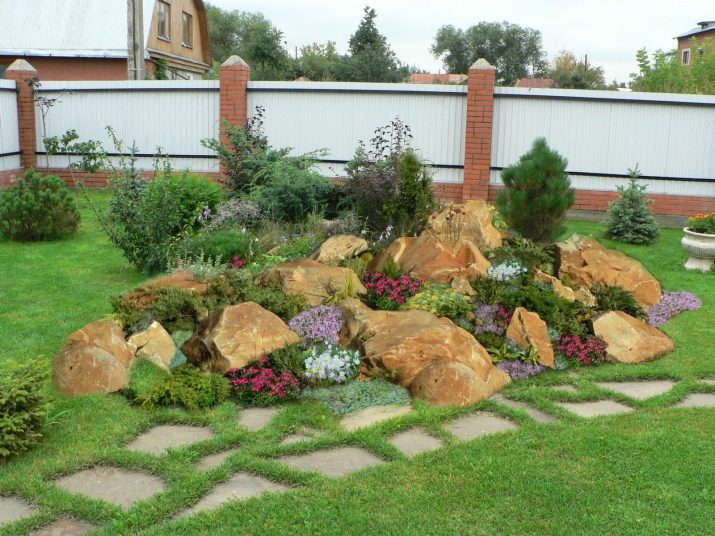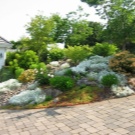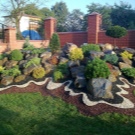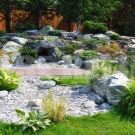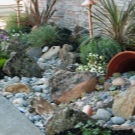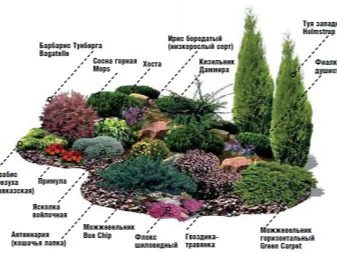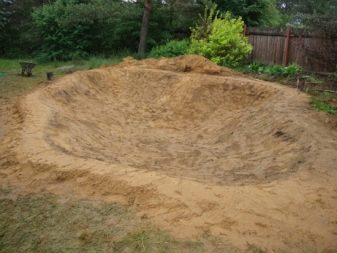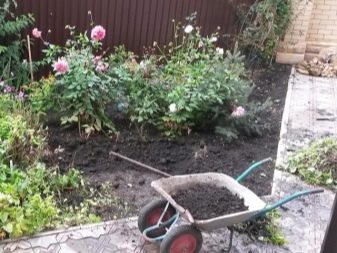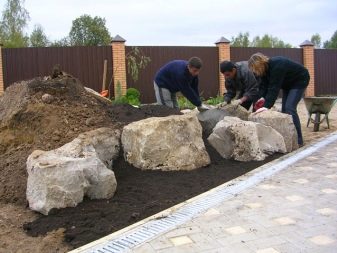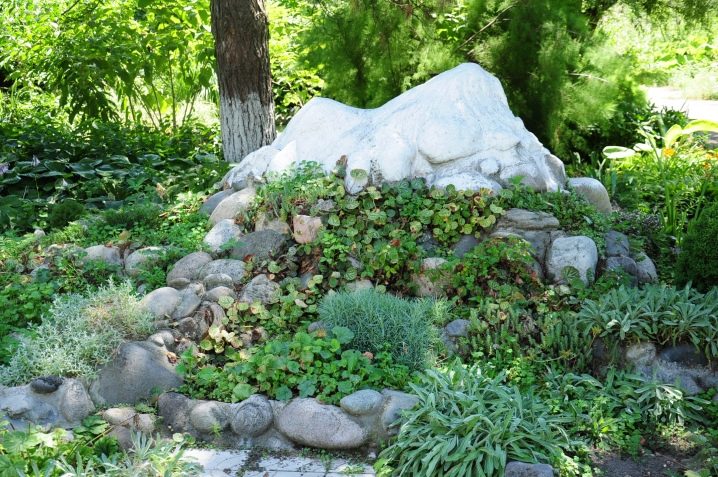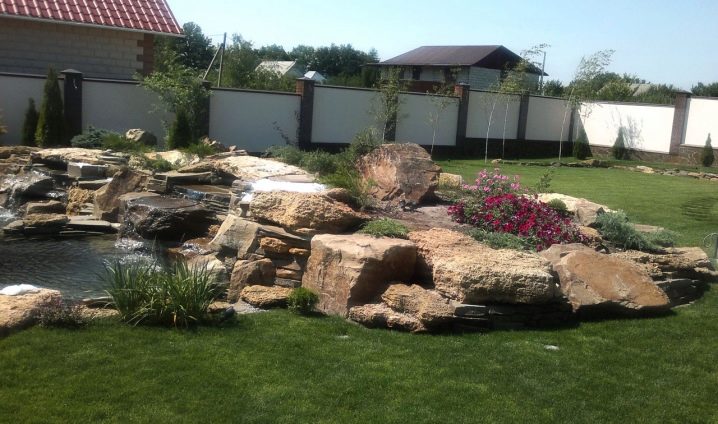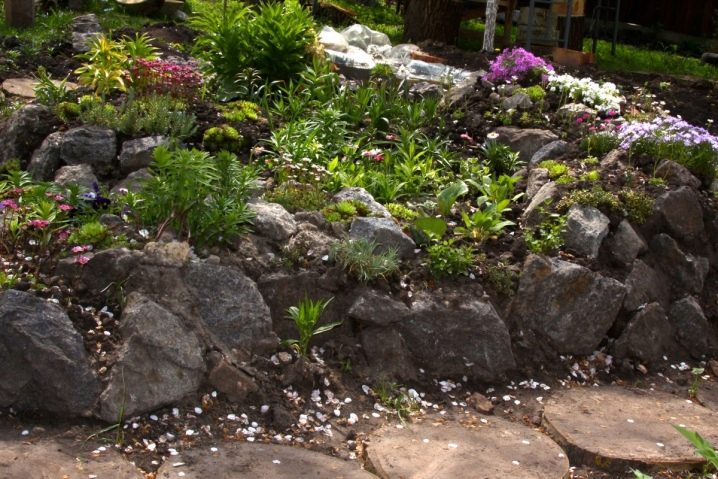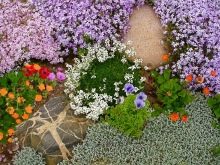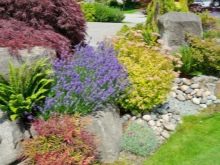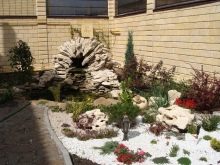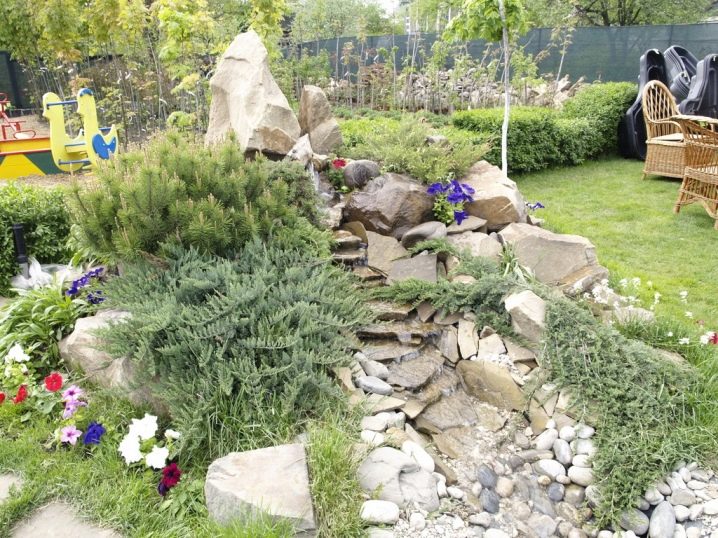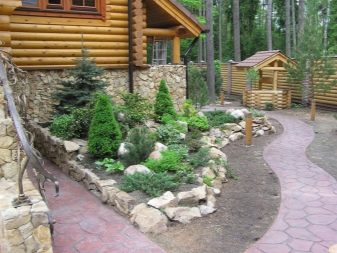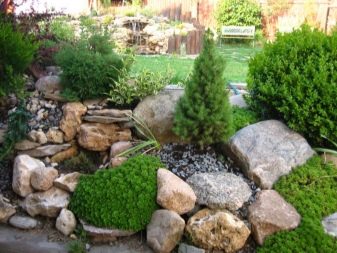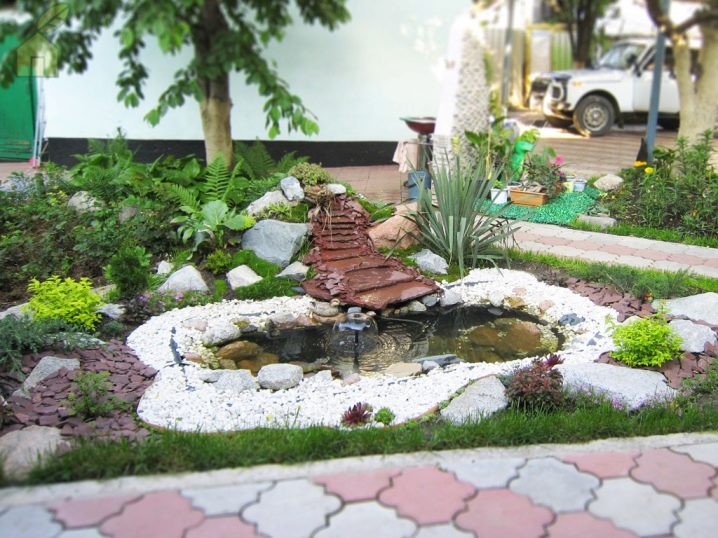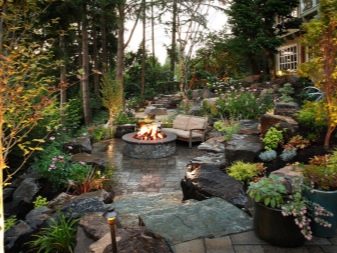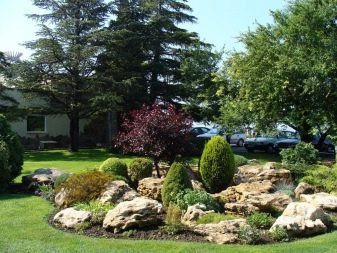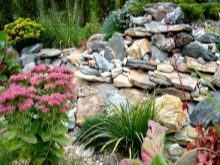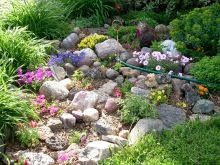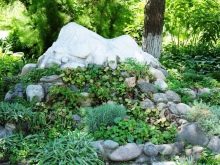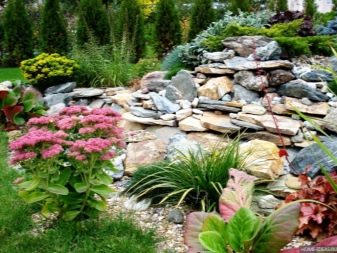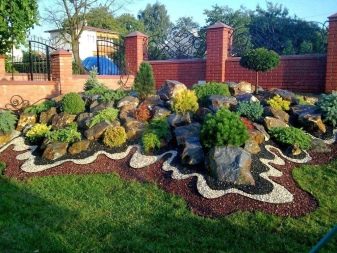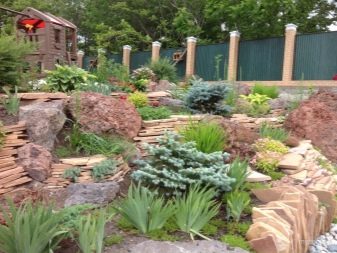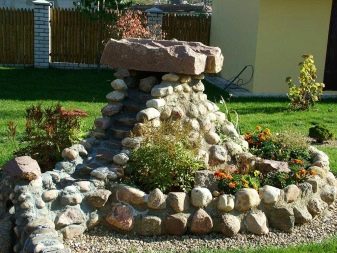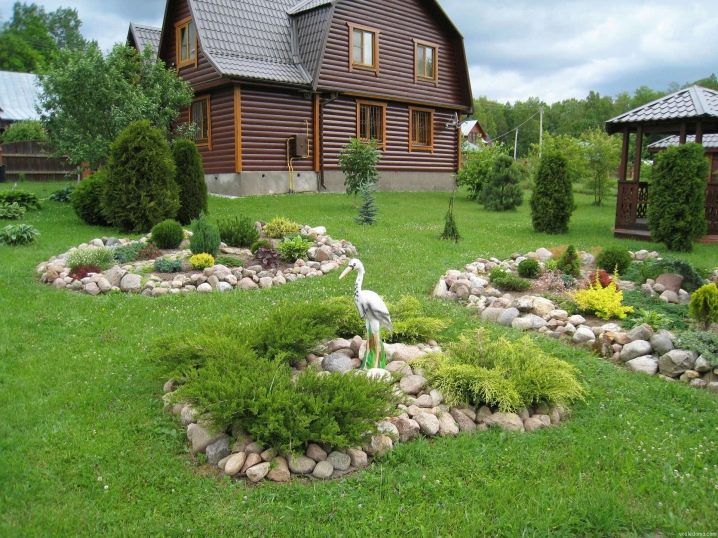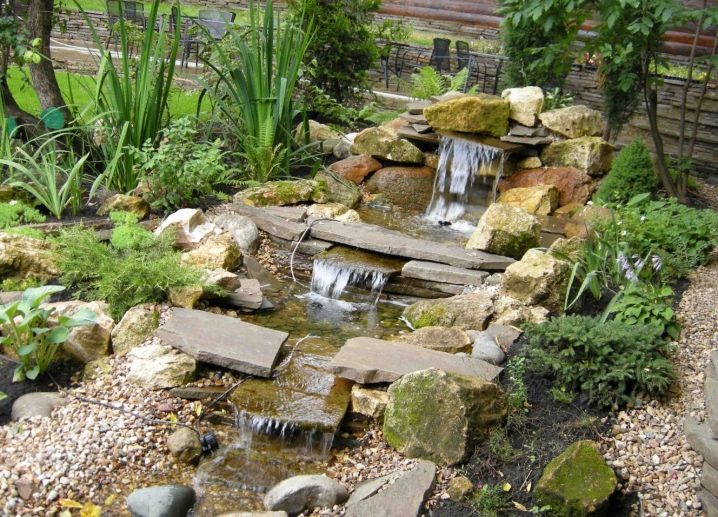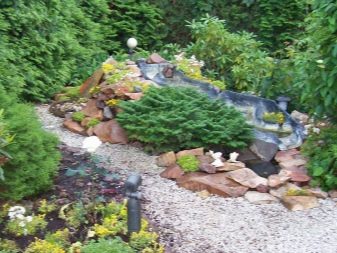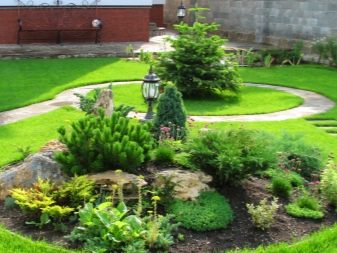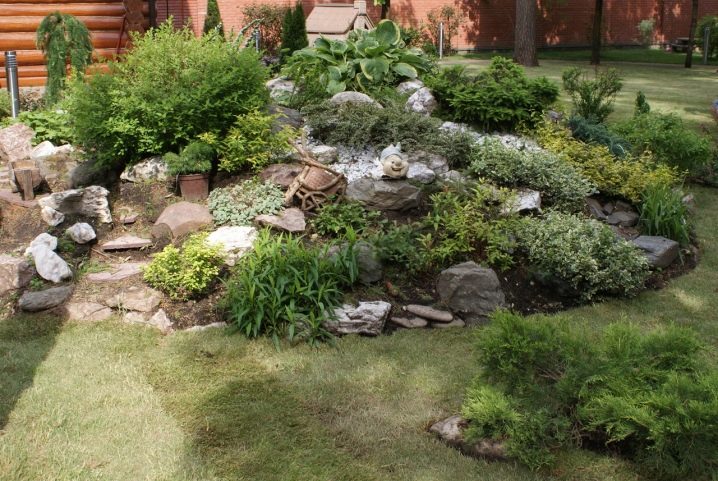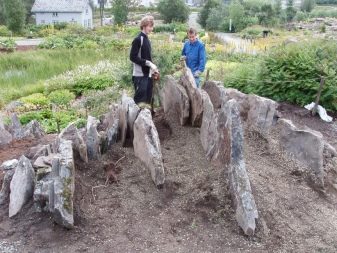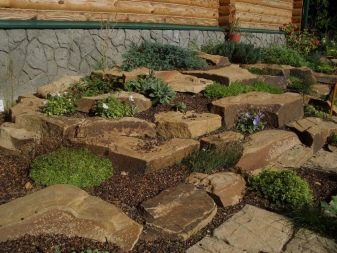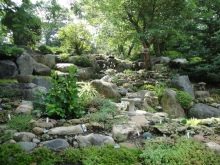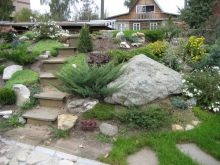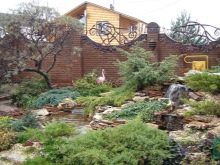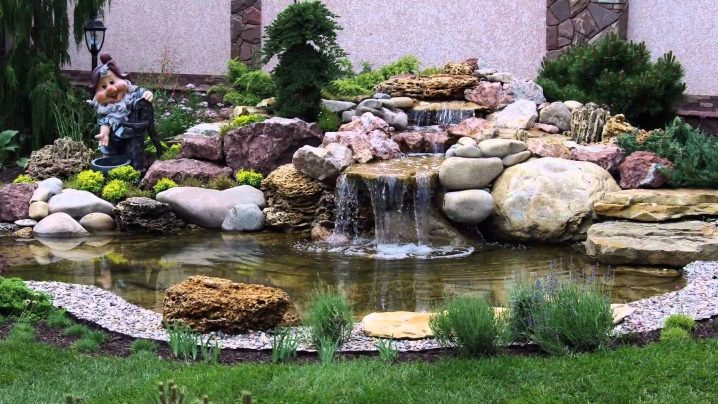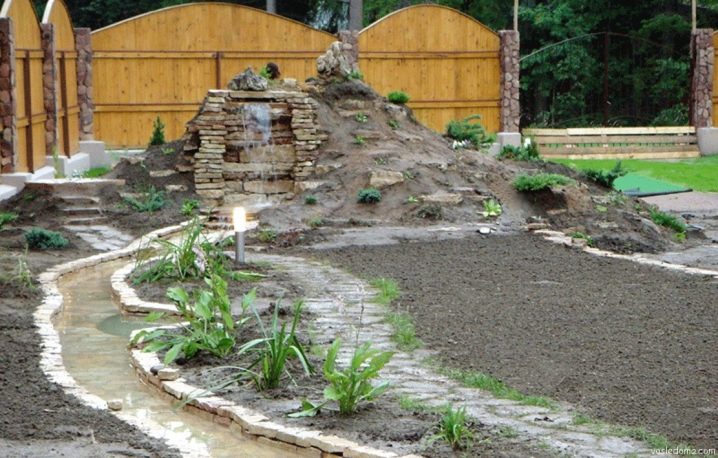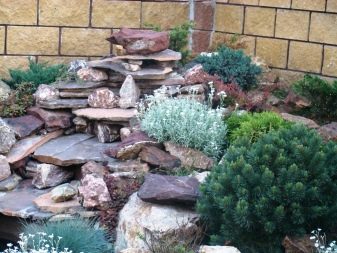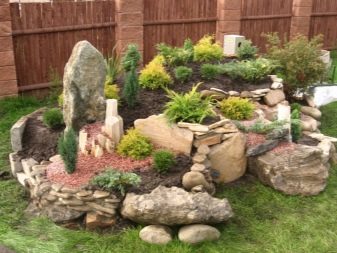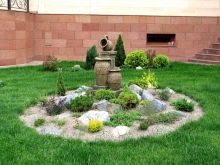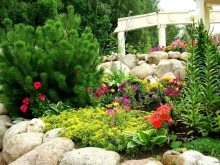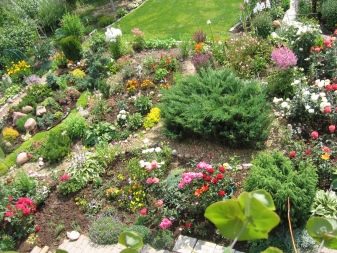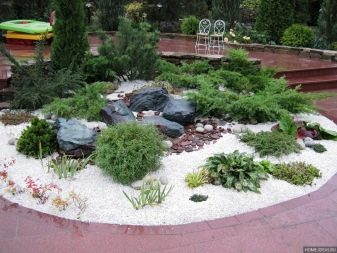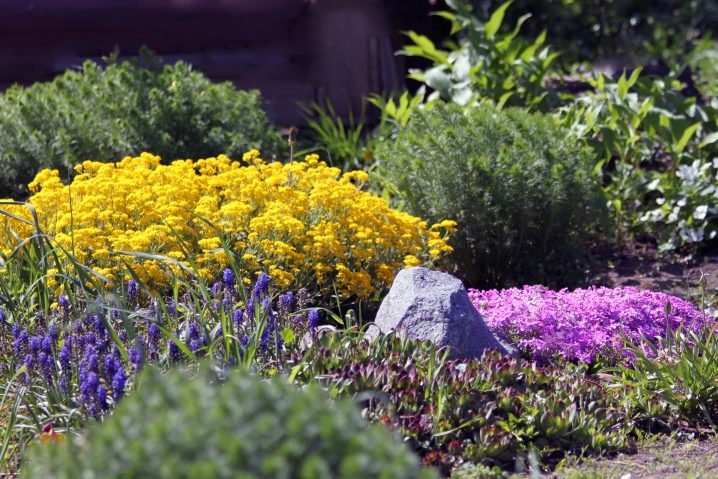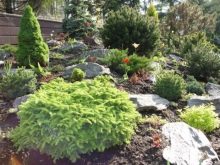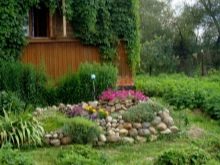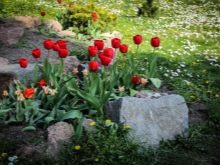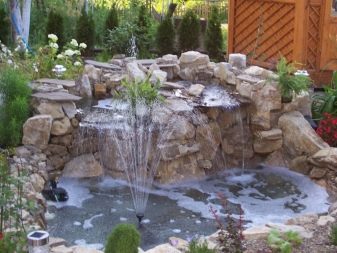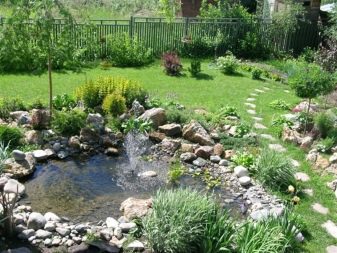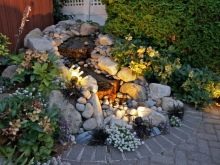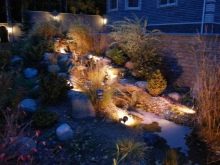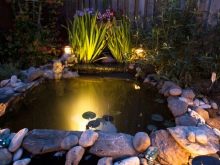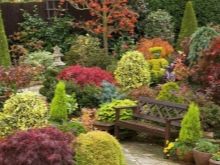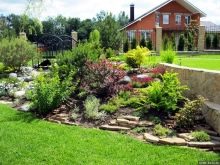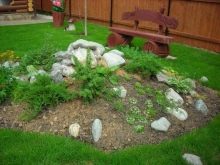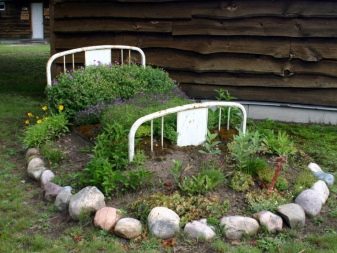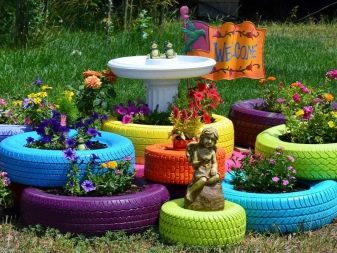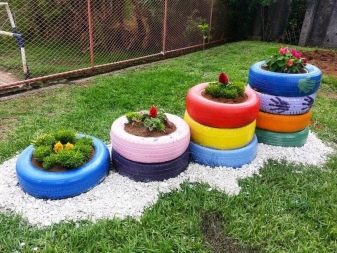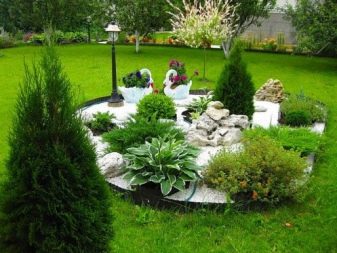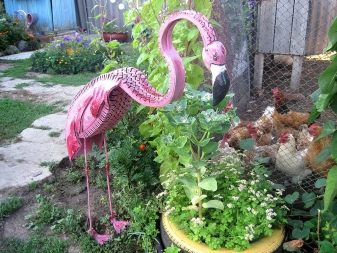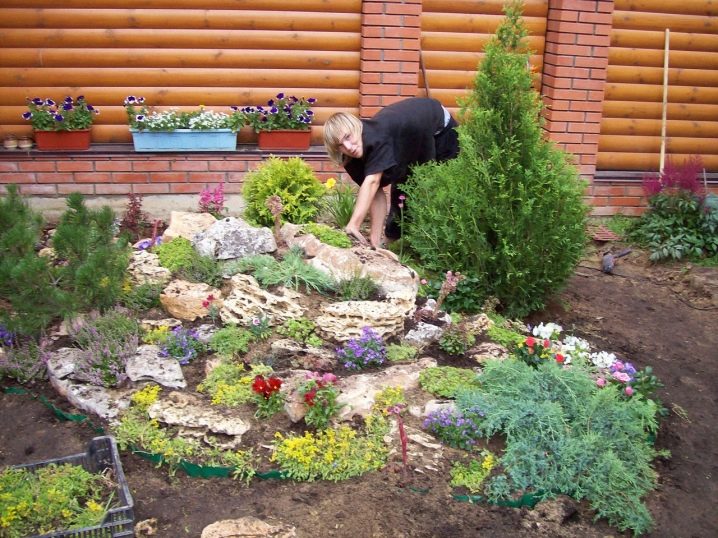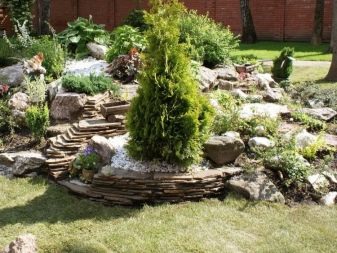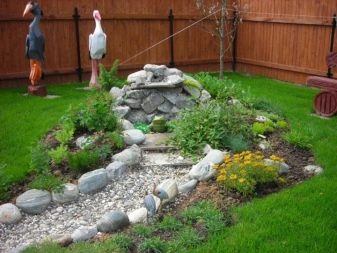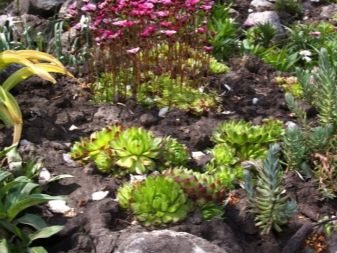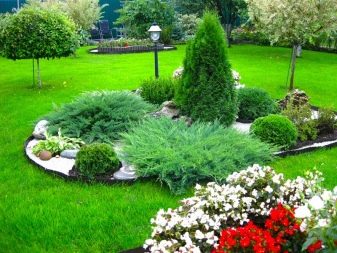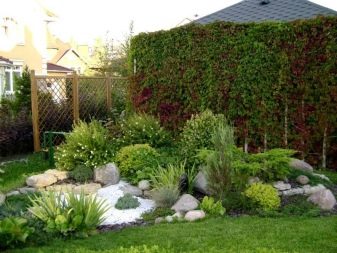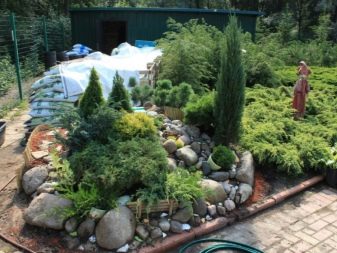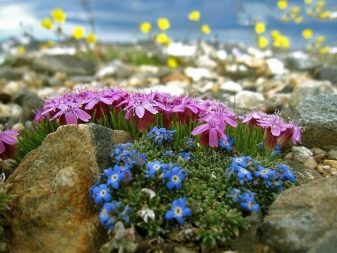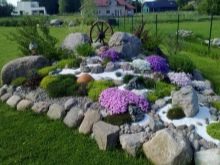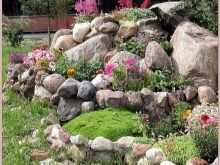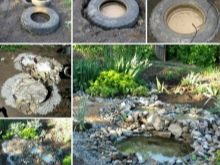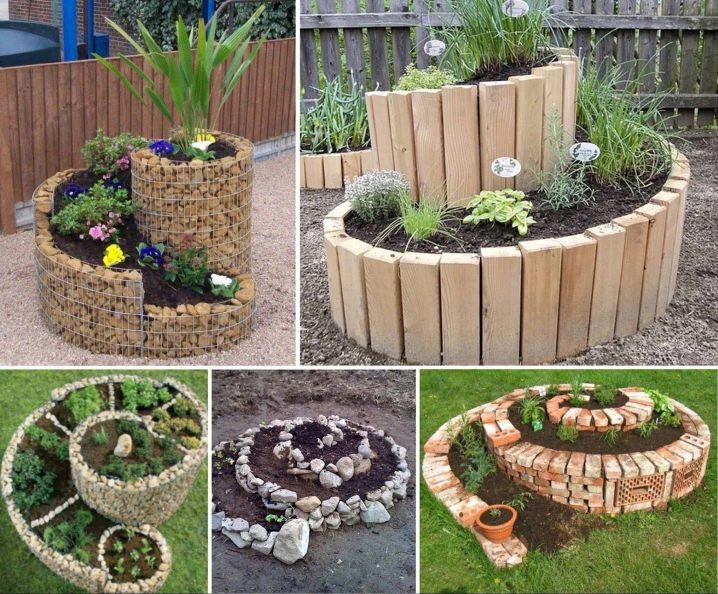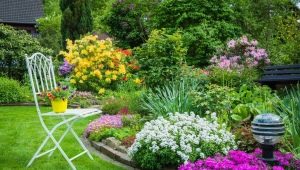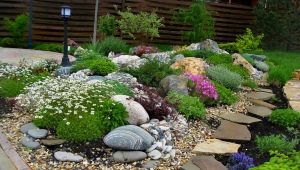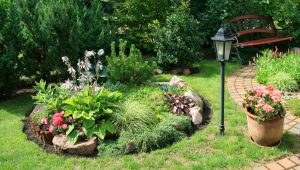How to make an alpine slide with stones?
Currently, homeowners have many opportunities to decorate their gardens. You can surround it with a hedge, lay out beautiful paths around well-groomed lawns, plant exotic plants with difficult to pronounce names. However, all this is a long time familiar thing to seasoned cottagers. And for those who want to surprise and be surprised, there is another, less standard and more original solution - an alpine slide with stones, which you can create yourself if you wish.
Special features
One of the most spectacular and unlikely elements of landscape design is the Alpine Hill. On the one hand, it creates an atmosphere of peace and promotes proper rest, on the other - a flight of fancy for its arrangement is not limited to almost anything. In the absence of time, you can contact the specialists, but often the price for their services makes you wonder if this is necessary.
Nothing prevents an enthusiastic summer resident to create a rock garden in the country itself, even from scrap materials. Moreover, no education is required for this. It can even beginner.
There are several types of rock gardens, each of which is a copy of a mountain landscape:
- rock - consists of large stones and boulders;
- mountain slope - is located on areas with a slope;
- valley - for conditionally flat areas;
- Alpine lawn - a great option for a beginner, manually projected on the dacha, small stones and many flowers are used;
- ravine - good in the presence of a natural fracture of the relief;
- Stone Garden - rockeries, in the spirit of the Japanese rock garden.
You need to know that the technology of creating rock garden consists of the following steps:
- Design. At this stage, the required number of materials and plants for the future object is calculated, their species are selected, which will be used, and a drawing is created, allowing to present its appearance in perspective.
- The choice of location for the location of the rock garden, and a preliminary marking of its borders and shape on the site.
- Site preparation for construction, which includes soil drainage if necessary.
- Laying stones. Pond device, if scheduled.
- Planting of plants.
After this, there remains only the constant care of the hill and, if desired, the renewal of the plant species inhabiting it.
Location
The best place to place an alpine slide will be the eastern or western slope - this is the advice of landscape designers. But this does not mean that you can not build it on the north side of the site. Just then you have to choose shade-tolerant plants that love moisture. But you can act slyly and create a hill, oriented to different directions of the world, making the southeastern and southern slopes more gentle than the northern and northwestern ones.
Gentle slopes are better visible.
When choosing a place for a future alpine slide, it is important to consider a number of conditions:
- If the garden has natural natural uneven terrain, they are perfect for making a rock garden, saving the owner time and effort.
- The composition should be visible from every corner of the plot, so it would be right to place it in open areas.The presence of trees close to the rock garden is undesirable, because, firstly, in the fall there will be problems with clearing the hill from fallen leaves, and secondly, a tall tree near the hill can suppress it, distorting the actual size.
- It is better if the alpine hill will illuminate the sun, because the alpine plants are light-requiring. Particularly well, if the rays of the sun will be directed to the hill before noon. It is important to note that the area that will be in the shade will dry out longer after rains and heavy rains. But this can be prevented by simply planting fern plants.
- The soil should not be wet and, if possible, stony. Alpine plants do not tolerate moisture.
- Avoid placing a rock garden near a wall or fence, it is correct if the background is vegetative in nature. It is also undesirable to have too close to the house, because in winter there is a chance of snow falling from the roof.
- In the garden rock garden will also look inappropriate. The very idea of an alpine slide is to create an atmosphere of comfort and peace for the owner, which is unattainable among the beds and greenhouses. Against the background of outbuildings (garage, chicken coop, barn) alpine slide will look ridiculous. To place it is ideal that part of the garden, in which the owners suggest to relax.
- A flat plot is not suitable for creating an alpine slide, because the name itself suggests uneven terrain, even if only a small one.
Supplement rock garden can be a flower garden, flower beds (or several), a beautiful lawn, which can also bend around the hill around the perimeter. Looks great pond or pond at the foot of the hill, even better if it flows into a small waterfall or cascade, located on the mountainside.
Landing patterns
When planting plants for alpine slides need to act clearly and consistently. Best of all - not a step back from the project. In this case, the arrangement of the slide with their own hands will pass quickly and at no extra cost. Beginner gardeners better to use simple schemes.
Alpine perennials are suitable as the main elements of the composition.which will grow over time and, as it were, form a kind of live cover. This, for example, geranium, Schmidt wormwood, obrietta, lavender. To enjoy the view of the roller coaster all season, it is good to plant in groups around the plants that bloom in different periods of the season. Make it easy. It is better to isolate the brightest and attractive samples of flora in order to isolate them visually.
In a multi-tiered rock garden plants are planted sequentially, tier by tier. At the top are the most light-loving and drought-resistant species, for example, ground cover. For terraces slides suitable plants, easy to carry the shadow, but who love the sun. At the middle level, higher humidity. At the bottom of the hill, crops are planted that love moisture and shade.
Coniferous and deciduous trees and shrubs are planted first, occupying the largest areas. At the foot of the slides they should not be placed. After the planting of the shrubs is finished, grass is planted, then the ground cover plants are planted.
When forming the composition, it is necessary to take into account the periods of flowering of plants and their compatibility. Using both annuals and perennials when planting in a rock garden, you can achieve constant flowering and an attractive appearance, and, in addition, it will be possible every year to partially change the composition of plants.
A large stone of interesting shape, an unusual tree, a beautiful flower or a stream can become the dominant element of the composition, adding sophistication and completeness to the whole structure.
If the main emphasis is not, then you need to decide that the rock garden will be more bright - flowers or stones. If the flowers, then the stones should be neutral shades. If the stones are original and bright, then the flowers should not over-focus attention on themselves. To avoid the transformation of rock garden in a pile of randomly sketched stones, it is recommended to avoid the use of stones of different breeds.
Selection of stones
All types of alpine hills have one peculiarity - they imitate the mountain landscape.
Most often for the design of rock gardens in the course are rocky rocks: granite, limestone, basalt, sandstone - in general, any low-porous and durable rocks.
Porous rocks: tuff, dolomite, shell rock - should not be taken, as they quickly absorb water and from it collapse.
Stones must be natural, construction debris used for the arrangement of the hill in no case be impossible.
When drafting a stony garden, one should consider and present its future appearance. The rock garden should be combined in style both with the garden and with the house on the plot. For the construction of slides suitable rocks such as jasper, quartz (white-green, milky and “rainbow), marble (crumb), sandstone.
To create a small rock garden with a height of 1 m will need approximately 2 tons of heavy and large stones. (It should be noted that the minimum height of the slide is 0.5 m, and the maximum height is 1.5 m). The weight of each stone must be at least 12 kg, otherwise the design will be unstable. In addition to weight, both the shape and color of the stones are important. Stones with sharp corners or, on the contrary, too round river will be the unsuccessful decision. Multi-colored stones look good only on certain types of slides. The traditional version of the alpine slide is the design of its stones of the same breed (and colors), but different in size.
Along the perimeter of the hill place the largest stones. To give a natural design and better hitch, they are driven into the ground by at least 1/3. Stones with defects are laid to hide it. Parts of stones that are within sight should look as attractive as possible. Having boulders, it is necessary to leave space between them so that plants and flowers can fill it, growing. Also, when laying out stones, you should try to create a natural cluster so that the composition looks as natural as possible.
Next, you need to lay out the stones the number of terraces, which is provided for the project. Making tiers occurs sequentially from the bottom up. For the arrangement of the peaks choose the most attractive in shape and size of stones. In the case when the project provides for a waterfall, a cascade or a stream, a pipe or hose is mounted and masked at the top of the mountain, and in a pond at the bottom of the hill there is a pump regulating the water pressure. After attaching the "waterfall" it is necessary to sprinkle it with sand and install waterproofing.
Styling options
There are several options for building a rock garden. It is necessary to begin work with the fact that a mixture of soil, sand, humus and peat is neatly distributed onto the prepared foundation with drainage. Clay in this mixture should not be. At the same time, it is necessary to form the relief of the future rock garden. The embankment should not be flat or smooth. We need to strive for maximum natural naturalness.
Any irregularities of the terrain, whether it be depressions or peaks, paths, terraces are formed manually. Next, you need to lay out the stones in accordance with the selected model of the slide. Different sources distinguish different models.
You can use the following list:
- stepped mountain slope;
- mesas mountains;
- plateau;
- terraces;
- cliff;
- the gorge.
Each species has its own sequence of actions. However, one should not forget that even acting in the same way, two different people will create different rock gardens. Each rocky garden is one of a kind.
It is important to remember that every stone must be firmly fixed and not loose.
The simplest alpine slide in execution is the classic high mountains. It imitates typical highland terrain, made with the help of boulders and stones. It grows well edelweiss and gentian. As for the gorge, ravine or swamp - the creation of such types of landscape is much more laborious. It is best to equip them in areas with natural relief fractures. But to build a mini-copy of the alpine lawn with a lot of flowering plants is a snap.
After completion of the calculation of rock garden, you can think about how it will be framed - a lawn or several flower beds. It is better if the plants in the beds will be partially the same as on the hill.
Plants
For the design of rock garden flowers and shrubs need additional knowledge. Types of crops should be selected depending on which slide is planned. If the hill is a classic, perennials will be needed: both flowers, and herbs, and low species of trees, best of all conifers. To arrange a rocky hill, drought-resistant and light-loving species of plants are optimal. Also, these cultures should be suitable for landing on the hill and be combined with stones.
In addition to the above, the plants selected for the future rock garden should meet the following conditions:
- be attractive in appearance;
- do not require special care;
- to be thermophilic whenever possible;
- if trees or shrubs are used, they should be low.
Coniferous trees, for example, juniper, cypress, thuja - will be the basis for the slides. Organically fit into the composition of rock garden and shrubs: rhododendron, broom, almonds, lingonberries.
Without flowers, the rock garden is also impossible to imagine. Perennial decorative flowers will decorate any hill. Well-suited for these purposes kamnelomka, phlox, edelweiss, lavender, primrose.
Deciduous plants should be selected with care.It is worth avoiding the choice of deciduous species in order not to clean the fall of fallen leaves in the fall. It is better to dwell on evergreens, for example, cotoneaster, abelia, barberry, cyanotus.
If you add to the composition of onion species such as crocus, tulip, ordinary and late, scilla, autumn crocus, the rock garden will bloom from early spring to late autumn.
You cannot choose only annual plants for landing on the hill, otherwise in a year you will have to dig them up and re-plant the entire hill completely.
Decor
When the owner of the garden is not enough to arrange a rock garden, and you want to create a unique object, you can resort to the decor. The most spectacular in this case will be the reservoir. Mass variations: a fountain, a rock garden beating among the stones, a waterfall, a cascade or a stream, falling from the top, or a pond at the foot of the hill.
Choosing this decor option, you need to take into account that in order to arrange the waterfall, you need to place a submersible pump inside the reservoir, since the pressure tank that provides the necessary water pressure is not easy to disguise the rock garden among the plants. In addition, it is important to take into account the fact that under the direct rays of the sun the water in the pond will begin to bloom, therefore it should be placed in the shade.Deciduous types of shrubs should not be planted near the water, otherwise the reservoir will have to be constantly cleaned of foliage.
An interesting solution would be to highlight the rock garden in order to enjoy its view in the dark. It is best to use solar panels that can be charged during the day.
You can set the backlight around the perimeter of the hill or on each tier. In case there is a reservoir, a waterproof lamp will look very beautiful in it.
If the place on the site allows, it will be appropriate to equip a recreation area with a chaise longue or a bench near the hill.
If the owner has a small part of the garden, or there is no opportunity to invest a lot in the design of rock garden, you can refer to the materials at hand that are in each garage or storeroom. Broken crockery, old pots, rubble, stones - everything will come in handy. Dripping baby bath in the presence of artistic thought from the owner can turn into an interesting art object. And the presence of holes will help avoid the need to drain the soil. Some craftsmen even convert basins and baths into ponds at the foot of the rock garden.
Replacing natural materials can be old waste tires from car tires. They will be an excellent base for a roller coaster. One tire is enough for a small rock garden, and if you take a few, you can form tiers, raising the foundation for the future terraced structure. Moreover, tires can both protrude from the ground, being an independent part of the composition, and can be hidden from prying eyes, supporting it from the inside.
If the owner has a desire to further decorate his slide, you can resort to the technique of hand made. Garden men of papier-mâché or baskets woven from paper tubing, or perhaps original pots of plastic bottles.
The most important thing when decorating a rock garden is not to forget that the idea of an alpine slide is still in imitation of a piece of nature, so you should not overload it with artificial details.
Care rules
To care for the alpine slide is enough to follow a number of simple rules:
- time to weed;
- rarely watered;
- remove dried flowers.
Before winter, the most tender plants should be covered with spruce branches, the rest is enough snow cover.The thickness of the snow layer on the hill needs to be adjusted, this will help it to winter. If the winter is not too snowy, you need to additionally cover the entire structure with burlap or wood chips.
In the first year after the arrangement of the hill, bedding of the soil washed out during watering is carried out, as well as the strengthening of the stone foundation. After bedding, the ground should be tightly but neatly tamped.
Caring for plants on a hill is no different from caring for an ordinary garden - treatment with pests, timely watering, removal of damaged leaves and dried inflorescences. Water slides need very carefully so as not to erode the soil. It is better to do this with a weak water pressure, the hose or watering can should be with a spray. The soil should absorb water, it should not drain. During the season, fertilizers are fed as needed, preferably with potash or phosphate fertilizers.
When deciduous shrubs grow in the rock gardens, you need to take care of them in a special way:
- they should be transplanted either in early spring or at the end of summer - beginning of autumn;
- the easiest way is to grow vegetatively by horizontal layering;
- most types of shrubs propagated by cuttings. Best of all cuttings - the growth of the current year;
- to form the crown and produce sanitary pruning preferably in early spring and autumn.
For planting heavily growing plant species, you can use containers, for example, pots of the same color as the stones. Some plants need to be mulched, do it with gravel or rubble. The color of the mulch should also match the color of the stones. Behind the lawn, located along the perimeter of the hill, the best kind of care will be digging in curb tape. This means that under the gravel, which is the boundary of the hill, dense polyethylene is placed. This will prevent germination of weeds in the rock garden.
Beautiful examples
- Alpine slide with stones with their own hands. Uncomplicated and spectacular.
- A sophisticated alpine slide that requires more time.
- Step by step instructions for the manufacture of alpine slides from tires.
- Variants of alpine slides from scrap materials.
To learn how to make an alpine slide with stones, see the video below.
